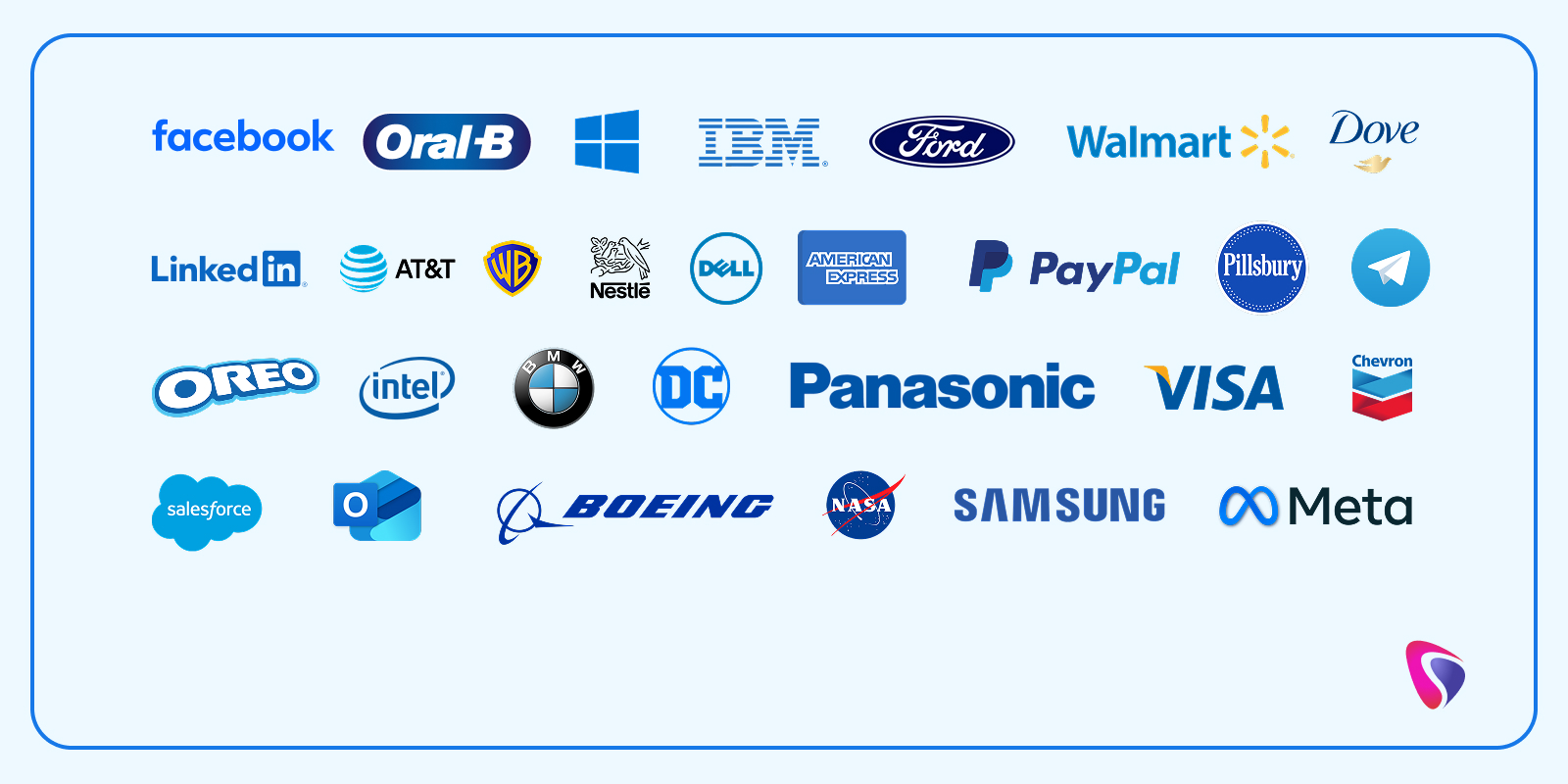
Businesses are looking to hire freelancers to get their jobs done quickly, efficiently, and smartly in 2025. As the freelancing culture is growing, companies are leaning more towards hiring freelancers to get their work done, meet deadlines, and bring fresh perspectives to the tables without having any long-term commitment like a regular/traditional employee.
Why the buzz? Whether you want to hire dedicated developers for a small task or someone for a whole project, hiring freelancers gives you so much flexibility and cost efficiency. Businesses are choosing to hire freelancers so that they can get subject experts, stay agile, access a global pool of talent, and get results faster.
Seems like a perfect fairytale? Isn't it? But here's the catch: hiring a freelancer doesn't automatically guarantee success. The performance and consistency can still be in question. Some issues, like delivering late, mismatched expectations, or a lack of accountability, can drain your business. And to tackle problems; you should know how to set your freelancers up for success from day one.
This article is for you. Whether you're a founder, product manager, founder or someone in the app development company looking to hire a freelancer, then this article is for you. It breaks down the strategies you need to increase the success rate of your freelancers in 2025.
Why Businesses Are Hiring More Freelancers in 2025
In this new age of 2025, the traditional 9 to 5 job is no longer the only way to get things done. Businesses are rewriting and renewing the rules of hiring, and that's why freelancing is becoming popular.
With the increasing demand and supply of remote work, businesses have reshaped how teams are built and managed. Companies hire on-demand experts who can jump in anytime during the project for better and quicker results. It's time to have more than just full-time employees.
One of the biggest advantages of hiring freelancers in 2025 is their flexibility; they can jump between projects anytime you need them and escalate the output with their experience and expertise. Hire freelancers if you want to scale your team overnight for an immediate app launch or if you need a UI/UX expert for that one big project.
And not only flexibility, but cost-effectiveness also plays a major role. Hiring in-house developers with specific expertise, like Flutter developers or Java developers, can be costlier, whereas when you hire dedicated developers as freelancers, you only pay them based on their time, work, and experience, plus no additional cost.
The major benefit is the ability to access the pool of global talent. Businesses can hire talent from any corner of the world. You can hire app developers from India while sitting in Europe, or hire web developers from Australia; everything is just a few clicks away! Businesses can build their dream team with people from all over the world.
Key Challenges Businesses Face with Freelancers
Let’s be real—freelancers can be a game-changer. But anyone who’s worked with a few knows it’s not always smooth sailing. As more companies jump into the freelance-first model in 2025, certain hiccups continue to crop up, especially for those hiring at scale.
Here’s what businesses often wrestle with behind the scenes:
1. Communication Barriers
You send a brief. They reply, “Got it.” But the first draft comes in and you’re left wondering, ‘Did we read the same instructions?
That’s the thing with remote freelance work: even with Zoom, Slack, and a million tools in between, messages can still get lost in translation. Time zones add another layer. If you’re in New York and your freelancer’s in Jakarta, you’re not just speaking across languages—you’re speaking across entire workdays.
2. Quality Inconsistency
There’s no shortage of platforms offering freelance work anyone can do, and that’s part of the problem. Just because someone can design a logo or code a website doesn’t mean they’ll deliver something you’d proudly showcase to your clients. It’s easy to be lured in by a low freelancer price, only to realize later you’ve paid twice—once for the freelancer and again to fix their work.
3. Missed Deadlines or Lack of Accountability
Let’s be honest—when someone’s not on your payroll, it’s tougher to enforce deadlines. Many freelancers juggle multiple gigs, and unless you’ve established expectations upfront, your project might not be at the top of their list. That can be a huge problem if you’re racing toward a launch or pitching to investors.
4. Difficulty Integrating with Internal Teams
Your internal team has a rhythm. Inside jokes. That one guy who refuses to use anything but Trello. Now drop a freelancer into that mix without a proper onboarding or a clear process, and things can go sideways quickly. Even the most talented hire can struggle if they’re not looped in properly.
Step 1: Hire the Right Freelancers
To increase the success rate of your freelancers in 2025, the most basic thing you have to do is to hire the right people. By choosing the right freelancers, you can truly escalate your project beyond expectations.
So, how do you ensure you’re picking winners, not just applicants?
1. Don’t Skip the Homework: Assess Freelance Talent Effectively
Before you get impressed by a sleek portfolio or a low quote, dig deeper.
- Start with the portfolio, sure. But don’t just skim the surface. Look for depth, consistency, and a track record of results in your specific domain. If you're about to hire flutter developers for a mobile app, for example, you want more than pretty UI—you want evidence of smooth user flows, optimized performance, and app store approvals.
- Check reviews from past clients. Freelancers with glowing feedback (especially across long-term gigs) are typically easier to work with, more reliable, and deliver consistent value.
- Assign a small test task. Nothing fancy. Just something real-world that gives you insight into how they communicate, solve problems, and meet deadlines. A freelancer’s ability to ask thoughtful questions and clarify the scope is often more telling than the final output.
2. Generalist or Specialist? Choose Based on the Task, Not the Title
A common hiring mistake is thinking one freelancer can “do it all.” But not every project calls for a jack-of-all-trades.
- For short-term, clearly defined needs—like writing ad copy or creating a one-page landing site—a generalist might be perfect.
- But when it comes to more technical or high-stakes work, it pays to go with specialists. Want to build a robust backend? Hire Java developers. Need a visually stunning cross-platform app? Time to hire flutter developers.
Matching the freelancer’s strengths with your project scope is half the battle.
3. Technical Vetting Is a Must (Especially for Developers)
When hiring tech talent—whether you want to hire dedicated developers, hire app developers, or bring in a few web developers for your next product—don’t skip technical screening.
You don’t need to be a tech guru to vet them properly, but you should:
- Ask for GitHub links, code samples, or live projects.
- Use coding assessments or technical interviews for roles that involve core development.
- Have an in-house tech lead review their approach if possible.
It won't make any difference in the short term if you skip this step, but it could cost you poor buggy features, missed deadlines, and more.
Step 2: Define Clear Goals, Scope, and Deliverables
Before hiring freelancers, you must know all the common mistakes everybody falls for and one of them is assuming that a quick email or vague Zoom call is enough to get the ball rolling.
Spoiler alert: it’s not.
If you want to get the most out of your freelancing program, and ensure you’re getting real value for the freelancer price you’re paying, then clarity is your best friend. The more specific you are upfront, the smoother the ride will be.
1. Start with a Bulletproof Brief
Your project brief shouldn’t just describe what you need—it should paint a picture of what success looks like.
Think of it like a GPS. If the freelancer doesn’t know the exact destination, how can they deliver the result you’re aiming for?
A great brief includes:
- Project goals: What’s the bigger picture?
- Scope of work: What’s in? What’s out?
- Target audience or user base (for apps, content, design, etc.)
- Technical and creative preferences: For example, if you want clean, minimalist code or a vibrant, Gen-Z-friendly interface, say it!
Whether you're working with a solo content creator or looking to hire dedicated developers for a software sprint, a precise brief sets the tone for everything that follows.
2. Timelines, Milestones & Metrics: Don’t Wing It
“ASAP” is not a deadline.
If you want your freelancer to deliver on time—and avoid unnecessary back-and-forth—then timeline transparency is key.
- Break the project into phases, and attach realistic deadlines to each.
- Define milestones where you can review progress and provide feedback.
- Set success metrics: How will you know the work is done right? This could be a performance target, a user response goal, or even just a final delivery in a certain format.
Pro tip: build in a buffer. Life happens—even to your best freelancers.
3. Document Everything (Yes, Everything)
Verbal agreements are nice, but written clarity saves relationships.
Even if you're running a lean operation or launching your first freelancing program, having everything clearly documented—from the scope to the deadlines to the freelancer price and payment terms—will help you both stay on track.
Use tools like:
- Google Docs or Notion for shared outlines
- Trello or Asana to track tasks
- Google Calendar to map out deadlines and check-ins
More documentation = fewer misunderstandings = better output.
4. Shared Expectations Prevent Friction Later
Freelancers work best when they feel aligned, not just hired.
Make sure they know:
- Who do they report to
- When should they check in
- How revisions will be handled
- What defines “complete” in your eyes
When your freelancer feels clear and confident, they’ll spend less time second-guessing and more time producing great results.
Step 3: Set the Right Pricing and Payment Structure
Money talks—and when it comes to freelancers, how you structure payments can seriously impact motivation, performance, and trust. If you're aiming to improve the success rate of your freelancers in 2025, nailing the pricing strategy is just as important as finding the right talent.
And no, the goal isn't just to negotiate the lowest freelancer price possible. It’s to find the sweet spot between value and fairness, because underpaying talent often leads to rushed work, burnout, or even ghosting.
Let’s break it down.
1. Align Pay With Quality and Market Benchmarks
Before you throw out a number, do your research. In today’s global freelance economy, income from freelancing varies wildly depending on skill, experience, location, and industry demand.
For example:
- A junior graphic designer may charge $15/hour.
- A senior mobile developer who specializes in Flutter might quote $60/hour or more.
- If you're looking to hire app developers for enterprise-level software, expect higher project-based fees based on complexity.
Bottom line: you get what you pay for.
Check platforms like Upwork, Fiverr Pro, or Toptal to understand market rates. And remember: if someone’s rate seems too good to be true, it probably is.
2. Choose a Payment Model That Fits the Job
Not every project is created equal, and neither is every payment plan. Here are the three most common freelance pricing structures and when to use each:
- Hourly Pay
- Best for: Ongoing tasks, flexible timelines, or work with evolving scope.
- Pro: You pay for time spent.
- Con: Less predictable. It can get expensive if not managed well.
- Milestone-Based Payments
- Best for: larger projects with clear phases.
- Pro: Encourages progress, provides checkpoints, and reduces risk.
- Con: Requires good project management.
- Fixed or Project-Based Rates
- Best for: Clearly scoped projects with firm deadlines.
- Pro: Transparent cost from the start.
- Con: Risk of scope creep if not properly defined.
For long-term collaborations, blending these models (e.g., milestones + bonus incentives) can work wonders.
3. Fair Compensation Leads to Better Work
There’s a direct link between freelancer price and performance.
Freelancers need to feel valued and appreciated to be more engaged and committed to their projects and go the extra mile. Whereas, if they're underpaid and unappreciated, they would do their work just for the sake of doing it, you won't get any exceptional over-the-mile output. They’ll move quickly to the next, better-paying client.
Want to build loyalty? Consider:
- Paying a small upfront deposit for trust
- Offering bonuses for early or exceptional delivery
- Paying promptly and reliably
In 2025, when income from freelancing is a major livelihood for millions globally, fair compensation isn’t just ethical—it’s smart business.
Step 4: Onboard Freelancers Like Your In-House Team
Hiring the right freelancers is just half the battle. Want them to actually deliver results? Onboard them like they’re part of your team, not some outsider doing you a favor.
Think about it: you wouldn’t throw a new full-time employee into a project without showing them the ropes, right? Do not take freelancers for granted because they're going to work on the core team; that's why a smoother onboarding process can make them feel welcomed.
Whether you're looking to hire app developers, hire dedicated resources, or hire web developers, setting the stage with a strong onboarding process can be the difference between missed expectations and mission accomplished.
1. Start With Culture, Not Just Tasks
Freelancers may not be on your payroll, but they still represent your brand. Give them a glimpse into your company culture—your values, tone of voice, what success looks like to you.
Are you laid-back and agile? Or corporate and process-driven? Sharing this upfront helps them tailor their approach and blend in better.
If you're working with multiple freelancers across different regions, this cultural insight helps reduce friction and creates alignment from day one.
2. Set Up the Right Tools and Channels
Nothing kills momentum like the dreaded “Hey, do I have access to this yet?” message.
Before your freelancer Pes in, make sure they have:
- Access to communication tools (Slack, Teams, Zoom)
- Project management dashboards (Asana, Trello, Notion)
- Design or development environments (Figma, GitHub, AWS, etc.)
- Company docs or style guides that they should follow
If you're bringing on a developer—say a Flutter developer, Java developer, or even an entire freelancing program—they need access to the tech stack and documentation to hit the ground running.
Pro tip: Create a "Freelancer Toolkit" folder with everything they’ll need to start confidently.
3. Assign a Go-To Person (Because Silos Don’t Work)
Freelancers don’t have the luxury of water-cooler conversations or walking over to ask a quick question. That’s why having a single point of contact—be it a project manager, team lead, or product owner—is essential.
This person should:
- Answer questions quickly
- Provide ongoing feedback
- Make decisions or escalate blockers
Clear communication flow = fewer delays and misunderstandings.
4. Use Role-Based Onboarding Checklists
Not all freelancers need the same info. Tailor your onboarding to their role to avoid overwhelming them with irrelevant details.
Here’s a quick cheat sheet:
- For App Developers
- Codebase access and branch policies
- Dev tools and tech stack intro
- Coding standards and deployment process
- API documentation and credentials
- For Designers
- Brand guidelines and style assets
- Access to Figma/Adobe/Sketch files
- Design feedback loop and approval process
- Audience insights or product personas
- For Marketers
- Tone of voice and brand messaging
- Access to email platforms, CMS, or analytics tools
- Campaign goals, personas, and KPIs
- Competitor examples and past campaign results
Step 5: Use the Right Tools for Collaboration
You could hire the most talented freelancers in the world—whether you're looking to hire app developers, hire dedicated developers, or tap into a global network of creative professionals—but without the right collaboration tools, even the best partnerships can fall flat.
Freelancers thrive when communication is seamless, goals are clear, and progress is visible. Let’s explore how smart collaboration tools can boost productivity, reduce friction, and increase the overall success rate of your freelance team.
1. Project Management: Keeping Everyone on the Same Page
Without a system to track tasks, deadlines, and deliverables, things fall through the cracks fast.
Top picks:
- Trello – Great for visual boards and simple workflows.
- Asana – Ideal for managing complex projects with multiple teams.
- ClickUp – A power-packed all-in-one platform that combines docs, tasks, sprints, and goals.
Whether you're managing a freelancing program or working with a solo designer, these tools help define ownership, monitor timelines, and stay agile.
Pro Tip: Create a dedicated board or workspace for each freelancer or project, and use tags like “In Review” or “Needs Input” to keep progress transparent.
2. Communication: Real-Time, Clear & Centralized
When freelancers aren’t sitting next to you, over-communication is a good thing. But not all messages are equal—some need instant replies, while others can wait until later.
Recommended stack:
- Slack – Perfect for real-time conversations, channel-based discussions, and integrations with tools like Google Drive and Asana.
- Zoom – Still the go-to for video calls, weekly standups, or project kickoffs.
- Notion – Great for asynchronous communication, knowledge sharing, and keeping long-form documentation in one place.
Bonus: Establish a rulebook—like what to message on Slack, when to book Zoom calls, and how to document key decisions on Notion.
3. Code Repositories: Version Control Without the Chaos
If you're planning to hire Flutter developers, web developers, or Java developers, version control isn’t optional—it’s mission critical.
Essential platforms:
- GitHub – Great for code sharing, branching, pull requests, and documentation.
- GitLab – All-in-one DevOps powerhouse with integrated CI/CD pipelines.
Don’t just give access—set rules. Define commit message formats, merge protocols, and branch structures (e.g., main > dev > feature).
Pro Tip: Regularly review pull requests and leave constructive feedback to keep code clean and consistent.
4. File Sharing & Document Management: No More “Where’s That File?”
Let’s kill the endless back-and-forth of file sharing with cloud-based solutions.
Best practices:
- Use Google Drive or Dropbox for shared folders
- Create structured folders by topic, date, or sprint
- Always label files clearly: Homepage_Design_v2_FINAL.jpg (and not “finalfinal123.jpg”)
For larger teams or long-term partnerships, tools like Notion, Confluence, or SharePoint can serve as internal wikis, keeping SOPs, guidelines, and references in one place.
Step 6: Provide Continuous Feedback and Support
Treat freelancers as long-term collaborators if you want to get the best from them. Set up weekly or bi-weekly meetings to discuss progress achievement, give constructive criticism, and clarify expectations. Building that trust line and giving direction will help align the freelancer with your goals. Encourage them to seek advancement through courses or certifications that they may be interested in; this shows you respect their success, not just their production. This is how you grow a successful freelancer program and allow freelancers to brush up on their skills while developing some winning profiles as time passes. Ongoing support bridges the gap between short projects and long partnerships.
Step 7: Measure and Improve Freelancer Success Rate
If you want to increase the rates of your freelance success, you're going to require more than just intuition- you will need measurable insights. Begin by keeping track of KPIs such as task quality, on-time completion, communication efficiency, and overall ROI. Put in place simple feedback mechanisms that collect input from your internal team as well as from the freelancers themselves on what's working, what's not, and where they can improve. Recognize and reward the better performers with larger or long-term projects, which will serve as motivation for all. This way, you create a healthy, scalable freelance ecosystem that grows with your business.
How Hiring from the Right Partner Boosts Success
For me, the freelance platforms claim to have helped connect the buyer with 20,000 supposed professionals. This much was said to provide greater stability and expertise in working with established app development companies. What is there to say about consistency and accountability? A top app development company, Hyperlink InfoSystem, works with you in finding talent, while on the side, they provide support throughout the project, a project manager with experience, and developers rich in varied industries. So, when searching for a mobile app development company to build your next big thing or looking for a web development company for your digital presence, partnering with the right agency ensures better results, more direct communication, and fewer surprises. Dedicated developer models provide more control and long-term assurance on the path of lesser resistance to success, unlike freelance marketplaces.
Future Trends That Will Influence Freelancer Success in 2025
Freelancing in 2025 is no longer about sitting in an office somewhere away- it's about working smart. The emerging AI tools and automation are helping freelancers streamline their workflows and organize the output so that everything is done faster while meeting even greater quality standards. Technical work for freelancers is also heavily supported by AI technologies, such as AI-powered writing assistant tools for content authors or automated testing tools for developers. Blockchain with smart contracts is evolving the idea of payment and project milestones to provide more transparency with trust.
We're also witnessing the rise of freelance agencies and hybrid teams, wherein inPidual experts are grouped together under one umbrella to undertake larger projects. The shift is extremely opportune for those trying to understand how to be a freelancer in the year 2025. And if you're looking for the ultimate guide on freelancing, one thing is for sure: the future of freelancing is tech-based, collaborative, and fast-paced.
Conclusion
Into the year 2025, the freelance economy will stand stronger and brighter than ever before; however, it's only for those businesses that know how to harness it successfully. Hiring a freelancer does not merely come down to hiring someone to get the job done; rather, it's possible to think of it as forming partnerships that can bring value. By hiring the right talent, pitching them the right constructive goals, and also fairly compensating them, you give them a fighting chance at success with the right tools, support, and workflow integration.
Whether in search of dedicated developers or app developers, or in collaboration with creative professionals worldwide, it will nearly always benefit freelancers from being treated as part of your team. Engaging with professional agencies such as Hyperlink InfoSystem—a top app development company—takes your freelance strategy a couple of levels higher in terms of trust, quality, and consistency.
The freelance world is undergoing drastic transformations. Adaptation is key, as well as investment in relationships and embracing innovation-if you want to eventually lead rather than chase. Your freelancer's success is your business's success.
Start building smarter, stronger freelance teams today. Contact us!
FAQs
Q1: How can I ensure the right freelance hire for my project?
First and foremost, look at work samples in their portfolio, read client reviews, and if possible, give them a paid test task. If a freelancer comes up with an impressive resume just by the appearance of it, try to check if their communication style matches. Are they reliable? Ask about their past projects, how they handle criticism, and how they work under pressure-due dates go a long way. Technical knowledge matters, but so does professionalism.
Q2: Should I use freelance platforms or work with a development company?
That depends on your ultimate goals. Freelance platforms find you contractors for short-term work, so you have all the flexibility. But for long-lasting results and all-quality delivery, teaming up with a reputed app development outfit such as Hyperlink InfoSystem goes a long way. You get pre-vetted talent, project managers, and a working protocol, which means you don't have to start arranging a team from scratch all over again.
Q3: What will be a fair way to set freelancer pricing in 2025?
Freelancer prices may vary by experience, economic location, and task difficulty. As a rule of thumb, use the price standards of the industry but include how valuable the freelancer can be. Remember: You pay not for their time-span, you pay for their expertise, creativity, and efficiency. If a freelancer is well-compensated, the best work, commitment, and absence of annoying problems will be assured.
Q4: How can I help freelancers feel like part of the team?
Start by onboarding them properly—introduce them to your team, share your tools, and clearly explain your project goals. Regular check-ins, transparent communication, and giving them a voice in decision-making can go a long way. When freelancers feel seen and supported, they care more about the outcome, and that benefits everyone involved.


















